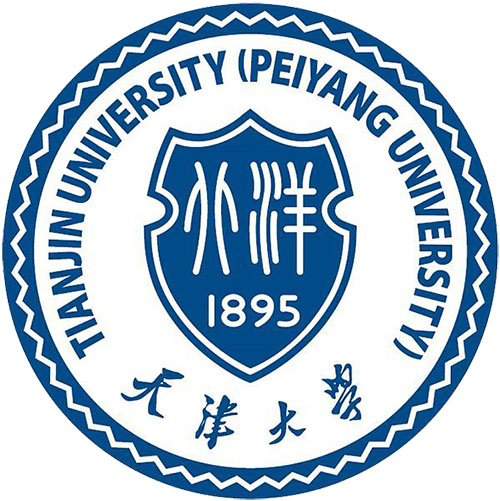Why Study in TJU
I. Pioneer of Higher Education
In 1895, Sheng Xuanhuai, as an Intendant (Governor) of Tianjin Customs of that time, asked Superior Prefecture Wang Wenshao, the Governor-General of Zhili (now Hebei Province) and Peiyang Grand Minister to report to the Qing Court. After acquiring sanction from the
Emperor, and with the assistance of Dr. Charles Danile Tenney, an American educator, Sheng founded the first new-type university in modern China – Peiyang Western Study School, i.e. Peiyang University (today's Tianjin University), in Tianjin, where Westernization Movement originated. Thus, the history of education in China started a new era. From October 2nd, 1895, Peiyang University has undergone a course of more than a century, accumulated valuable experience for the development of Chinese higher education and cultivated a large number of elites for the modernization of China.
Peiyang University was the first to fully adopt western university system in China. Upon its beginning,it ran according to American model, where western learning was mainly taught. Moreover, as to the school system, it was stipulated, as soon as the university was established, that the undergraduate program was the first class and prior to the second and that either of them lasted four years. To those who completed the eight years of study, the diploma was conferred at first by "Imperial Envoy Handling Peiyang Commercial Affairs Governor of Zhili" (now Hebei Province ) and later by Ministry of Learning (equal to today's Ministry of Education). In 1900, Wang Chonghui, the first graduate of Peiyang University, was awarded "The First Imperially Written Diploma". It can be concluded from the above that upon its beginning Peiyang University really lived up to the reputation of a new type university.
II. Seeking Truth and Striving for Thoroughness
In the early days of the university, Peiyang University set up law, civil engineering, mining and metallurgy, and mechanic departments to meet the needs of national construction and train modernized personnel for the country. The far-sighted founders of the university used the experience of western educational system for reference in building curriculum, choosing teaching contents, text books and teaching approaches. In the following years, the succeeding presidents strained every nerve working on the perfection of the school management. Till 1949, Peiyang University had expanded into 14 departments and 5 research institutions, training numerous qualified personnel in various fields.
Peiyang University had adequate scientific and engineering equipment, with special emphasis on engineering. "All the books, samples, devices and various equipment for probing and analyzing experiments needed by the departments of science, geology, mining and metallurgy, civil engineering and mechanics were purchased from the United States and Germany and must be replenished the next year, which made Peiyang University a university with the most adequate scientific and engineering equipment in China, creating good learning and practicing conditions for students." Meanwhile, in summer vacations, students had the opportunities to go on field trips to factories and mines with their tutors. "Thus instead of empty talking, students in Peiyang University admire real talent and sound scholarship. They are able to use what they have learned at school and earnestly practice what they have advocated." The early graduates of Peiyang University attained excellent records for examination organized by Ministry of Education of the government of Qing Dynasty, ranking high among other contemporary higher learning institutions in China.
In addition, practicing in various engineering projects aroused popular patriotism and the spirit of devotion among the students. In 1934, Qian Tang Jiang Bridge, which was the first bridge designed and built by Chinese engineers, was built in Hangzhou, Zhejiang Province. During the two-year period of the project, Peiyang students went to Hangzhou and engaged in the construction of the bridge, experiencing the whole process in person from the construction to the explosion of the bridge in the Anti-Japanese War. From senior masters such as Zeng Yangfu and Mao Yisheng, the students comprehended the truth that the destiny of an individual was closely connected with that of the nation, which aroused the spirit of patriotism and devotion among the younger generations.
III. Teachers of World Class
It is true that the development of a university depends on substantial conditions and environment, however, the key to it is the masters of the university. From the very beginning, Peiyang University followed the models of top universities in western countries, hiring native and foreign experts and masters as professors in their respective fields. Except Chinese courses and some foreign language courses which were taught by Chinese teachers, all core courses of western advanced science and technology were taught by foreign professors. Most of the Chinese faculty was overseas graduates returned in the early years, like Wang Shaolian, a Peiyang Naval Institute graduate returning from Britain. Foreign faculty mainly consisted of Americans who were graduates from top American universities, such as Stanford and MIT. They were recommended by their professors in response to the letter of invitation written by Dr. Charles Daniel Tenney, the General Supervisor (Acting President) of Peiyang University. The teachers gave instruction in English and adopted original English text books. "So in the early days of the university, Peiyang University could rival Harvard or Yale in teaching." "The first batch of Peiyang graduates was qualified to go directly to the graduate schools of famous American universities for future study." Due to its great achievements, Peiyang faculty was awarded by the Qing government several times.
With the development of the university, Peiyang started appointing outstanding native Chinese teachers as university faculty. A great number of famous Chinese experts and scholars, such as Feng Ximin, Mao Yisheng, Li Shutian, Wei Shoukun and Zhang Guofan, were invited to teach in Peiyang University. They guaranteed the quality of the academic teaching and research of the university.
 :
:
